Introduction and Package
Introduction
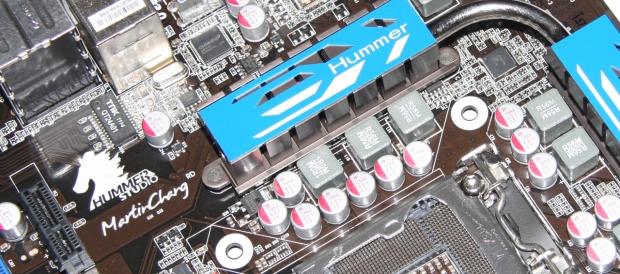
It's been ages since we've seen a board from Jetway here at TweakTown and I would probably go as far to say that this is the first time I've actually been hands on with a Jetway board. So today we're looking at the Jetway HI09-Z and while the model number doesn't really tell us anything, I can confirm it's an 1155 socket motherboard based on the Z68 chipset.
While it's the first time in a long time since we've looked at a Jetway board, it will follow the same format we normally would with any other motherboard. That means we'll start by looking at the package Jetway is offering. Once that's done we'll look over the board itself before checking out the BIOS before moving onto our testbed and the overclocking ability of the board.
Once we've done all that, it's of course time to see what kind of performance we're able to extract from the board. But first as we mentioned, let's check out what's going in the HI09-Z package we've got today.
The Package
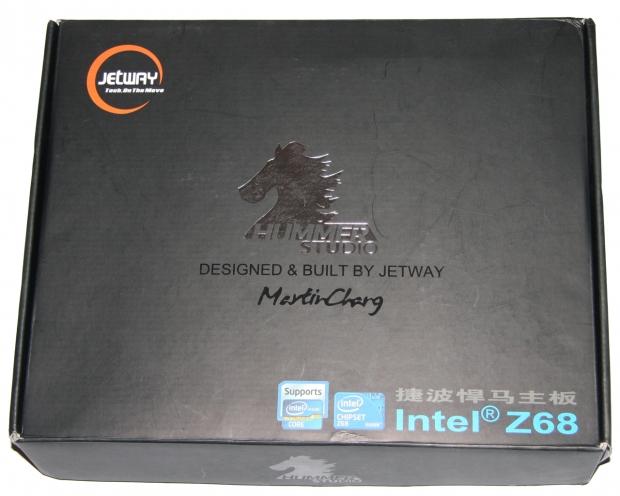
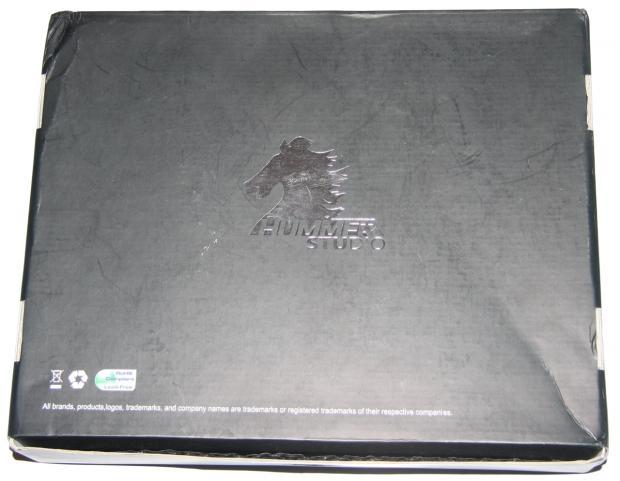
Looking at the front and back of the box, you can see very little is going on with just mention of the chipset and the fact it's part of the Hummer series and that the board is designed and built by Martin Chang. A quick Google tells us that Martin Chang is the R & D engineer for the Hummer Studio series. It will be interesting to see if this means anything or if it's just a name on the box.
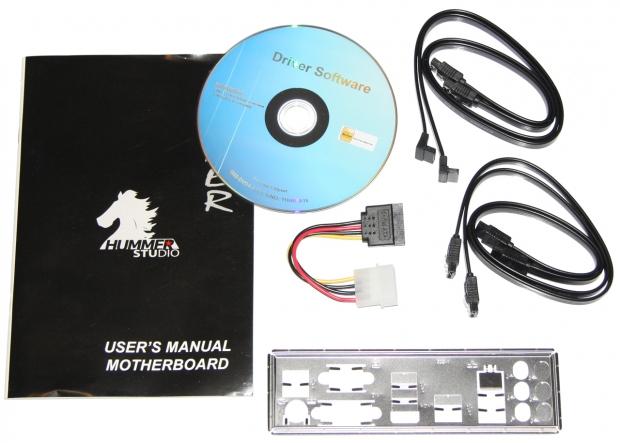
Moving inside the package, you won't find anything too out of the ordinary. We've got a user manual, driver CD, four SATA cables, Molex to e-SATA convertor and a back shield. Everything you'd expect from a motherboard and nothing more really.
The Motherboard
Looking at the board head on, the design isn't too bad, it looks similar to MSI with that Blue / Black color scheme going on and you can see we've got a pretty good looking heatsink setup. We'll look at all that closer in just a moment. Let's first take a closer look at the expansion slot side of things.
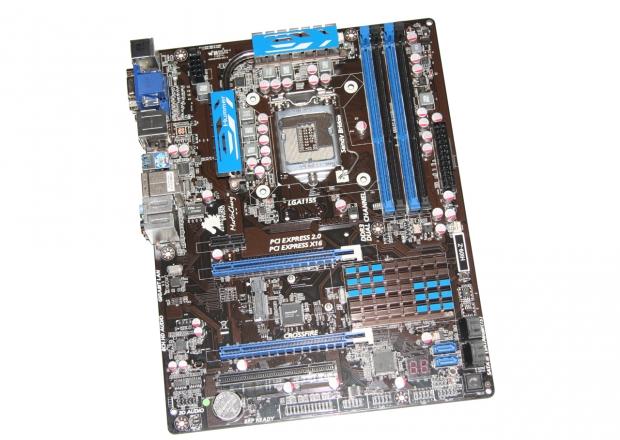
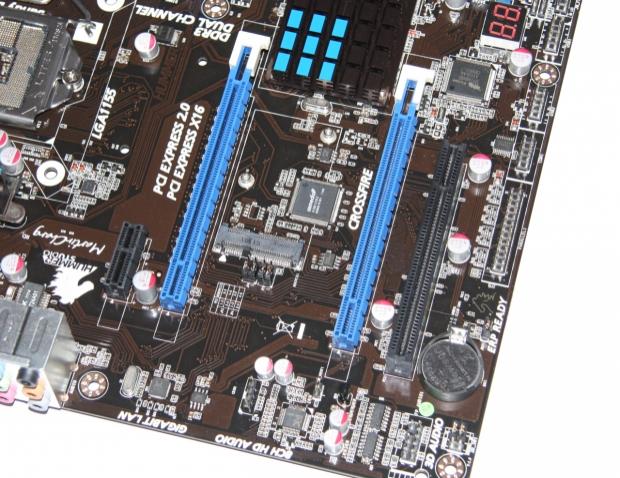
There's not a lot going on down here at first glance. You can see on the left we've got a single PCI-E x1 slot and on the right a legacy PCI slot. In the middle we've got two x16 slots that will of course run at x8 if you choose to run two cards in CrossFire.
The most interesting aspect here is between the two PCI-E x16 slots where we've got a mini PCI-E slot. If you wanted to you could use a mini PCI-E SSD card and make use of the Intel Smart Response Technology. Apart from that, there's probably not a lot of other uses for people.

Moving to the bottom of the board, you can see from the left we've got our audio header, next to that our CMOS battery, Parallel Port Header, Serial Port Header, two USB 2.0 headers, front panel header and a power button.
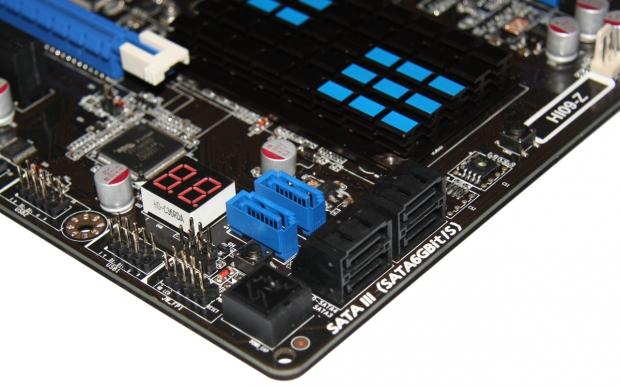
As we turn the corner, you can see just behind the power button we have another smaller button. This is a reset one and next to this we can see our LED debug header. As for SATA ports, we've got a total of six. The four black ones are SATA II while the two blue ones that point upwards are SATA III controlled via the native Intel chipset.
The Motherboard Continued
Moving to the top of the motherboard, we can see our four RAM slots which support up to 16GB of DDR3 at speeds of up to 2133MHz DDR. Below the RAM slots you can also see our main 24-Pin ATX power connector.
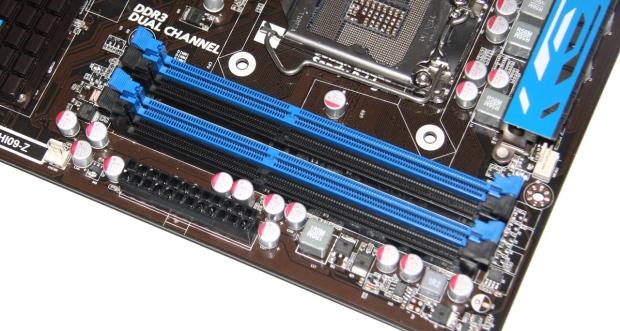
Apart from the RAM slots there's not much else going on up here with only a couple of fan headers being the only stand out.
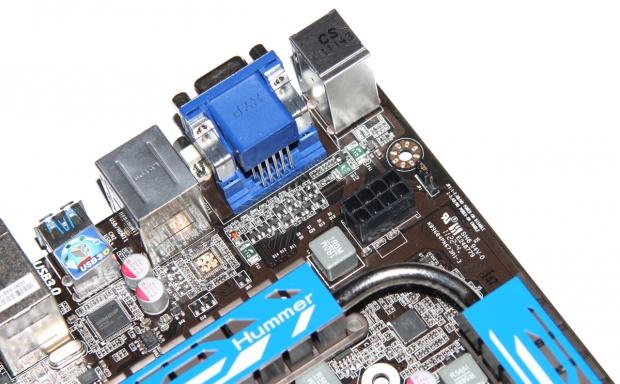
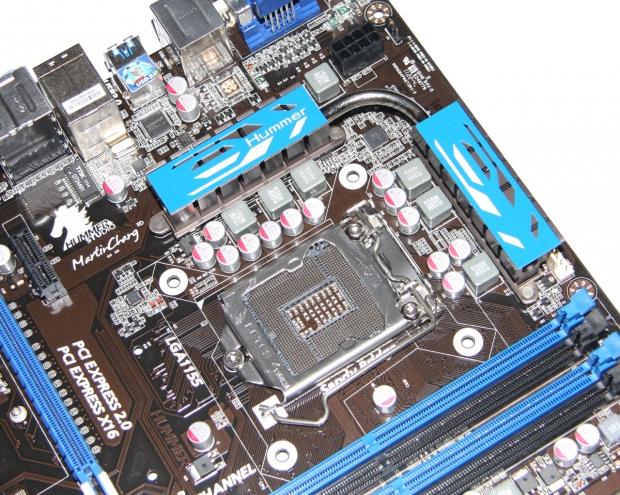
Looking around the CPU area, you can see our 8-Pin CPU power connector in the back corner with heaps of room around it. The CPU area is pretty clean and you can see a fairly nice heatsink setup going on with it being shown that this board is a part of the Hummer series.

Looking at the I/O side of things, you can see from the left we've got a combo PS/2 port and two USB 2.0 ports. Moving over, we've got a DVI and VGA port, another two USB 2.0 ports and a HDMI port. Next to this we've got two USB 3.0 ports controlled via the ASMEDIA controller, another two USB 2.0 ports, Gigabit networking and our audio jacks.
BIOS
Getting into the BIOS, the first thing you notice is that Jetway hasn't opted to use the UEFI graphical BIOS we've seen from most other companies. The second thing you notice as you go through the BIOS is that it's that horribly laid out one which gives barely any options.
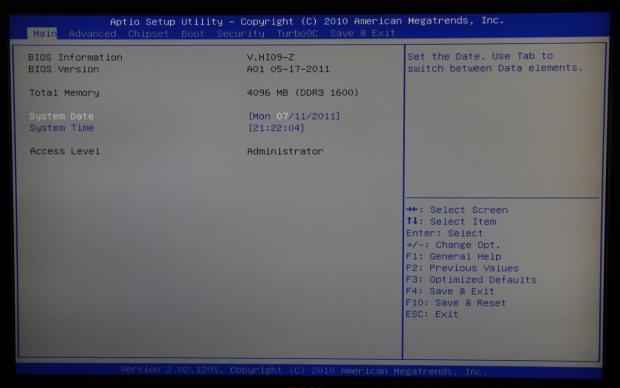
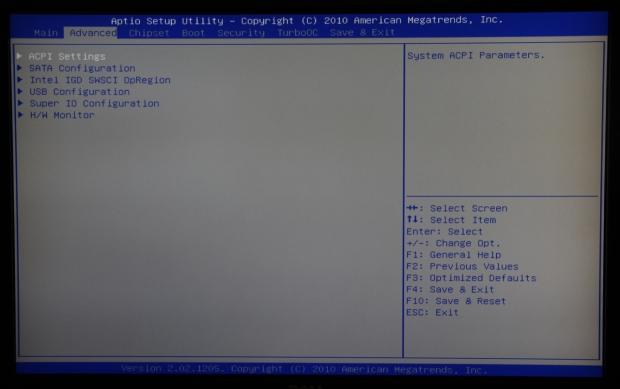
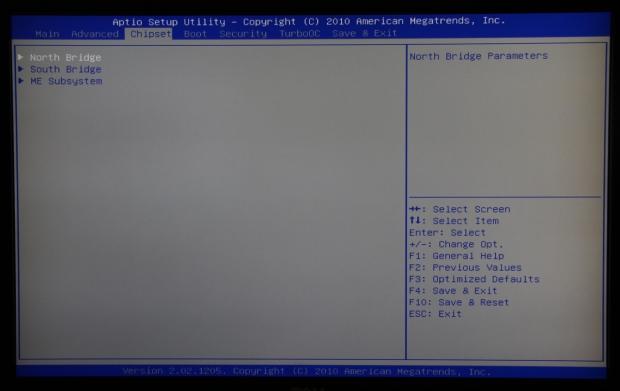
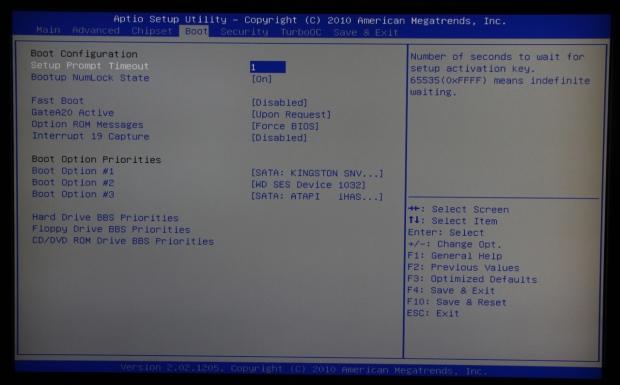
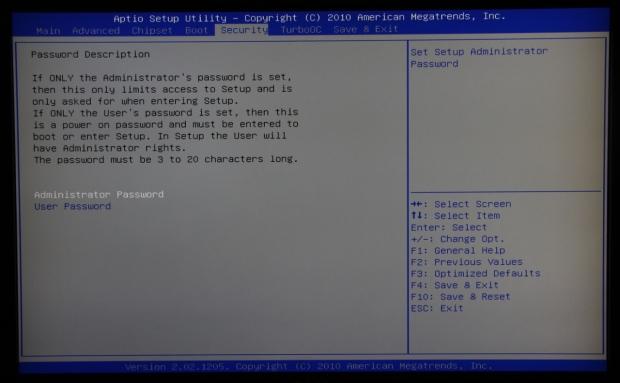
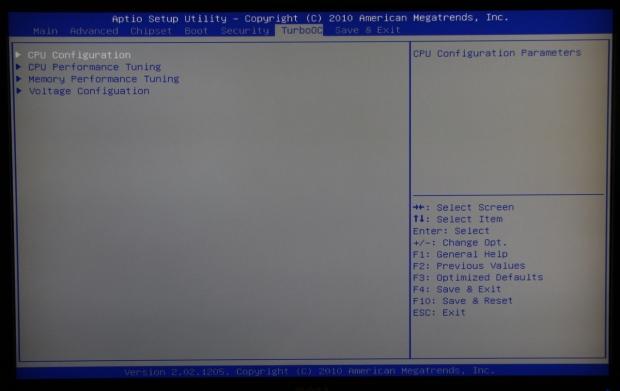
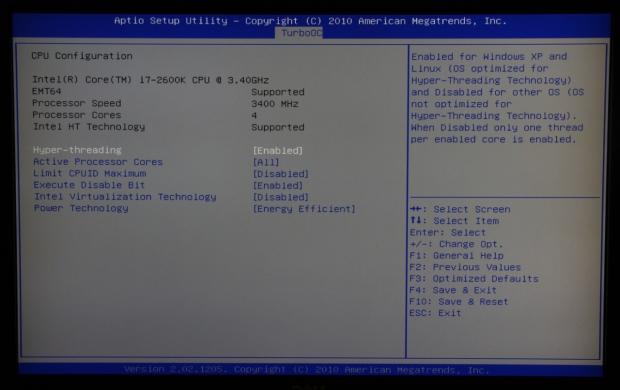
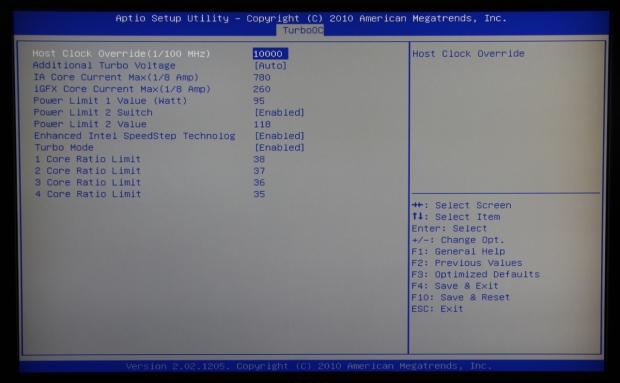
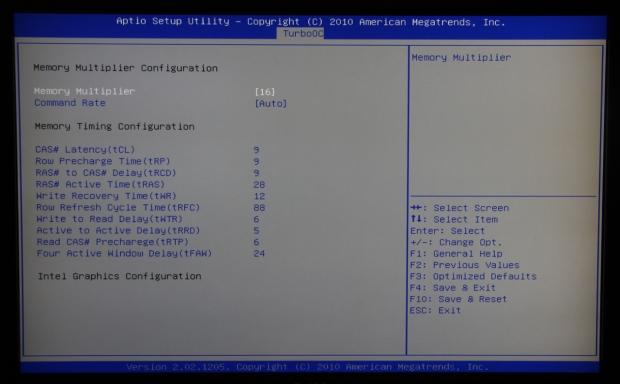
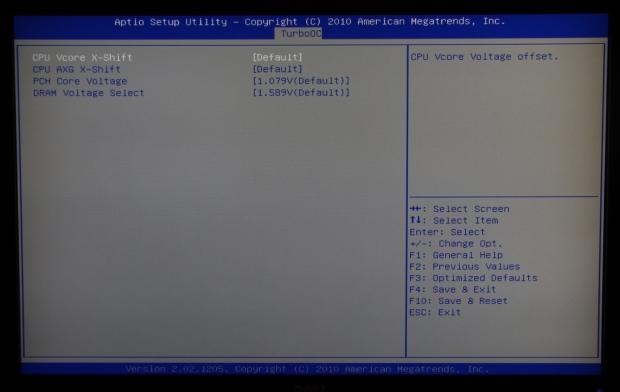
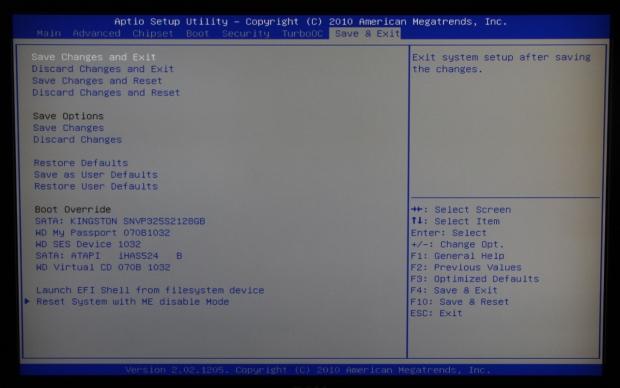
The lack of options becomes extremely apparent when we get into the overclocking side of things in what Jetway call the "TurboOC" section. Voltage adjustment is extremely minor and there is such limited range with the highest on the CPU being just above 1.5v. There's also no 1.65v option with only lower and higher options being available.
Test System Setup and Overclocking
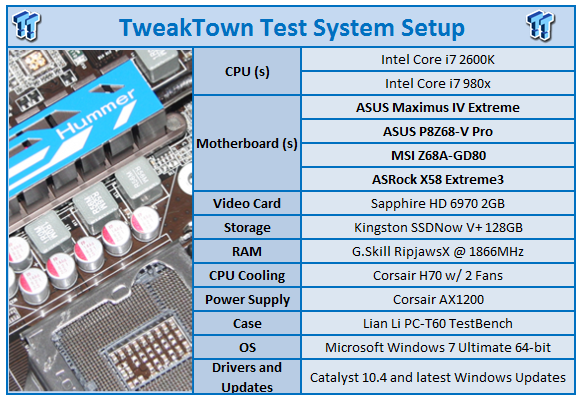
We would like to thank the following companies for supplying and supporting us with our test system hardware and equipment: Intel, ASRock, Kingston, Mittoni, Noctua and Corsair.
When it comes to the testbed side of things, there's nothing new going on and instead we'll just get into the overclocking side of things and the issues I had with the board. For starters, our 2133MHz G.Skill Ripjaws-X kit would not only not run at 2133MHz DDR, but it wouldn't run at 1866MHz DDR at default timings either. The only way we got the RAM running stable was by making the timings a little more looser on the kit while pushing the voltage up to nearly 1.7v.
Now that we were past the load screen and in Windows, we ran into a new set of problems with our system giving us a BSOD in a number of applications under load. The only way to fix this was by upping the voltage on the CPU in the BIOS. Once that was done, we had our system running well.
When it came to the overclocking side of things, I didn't expect too much since we were already running into horrible luck with this board. I figured I'd try for a 50x multiplier which would result in a 5GHz clock at 1.5v. Much to my surprise, we got a post and we ended up in Windows.
Unfortunately even more so to my surprise was that once in Windows the multiplier was only running at 43x, resulting in an overclock of 4.3GHz. With all the problems I had running the system, I didn't even end up taking a CPU-Z validation as it just completely slipped my mind.
Heading back into the BIOS to make sure I set the multiplier correctly, I moved it around a bit and no matter what, we still ended up at 4.3GHz. It wasn't a matter of the system not being capable of doing more than that, but it just wouldn't let us do more than that. With the voltage cranked higher than we'd like, considering we're only at 4.3GHz we proceeded to run our benchmarks anyway to see how we went.
Let's get started!
CPU Benchmarks
AIDA64
Version and / or Patch Used: 1.00.1035BETA
Developer Homepage: http://www.aida64.com
Product Homepage: http://www.AIDA64.com
Replacing Everest in our labs is AIDA64. This new testing suite is from the core development team from Lavalys and continues that tradition. The guys have thrown in better support for multithreaded CPUs as well as full 64 bit support. We use this to test memory and HDDs for now, but may find ourselves opening this up to other areas of the motherboard.
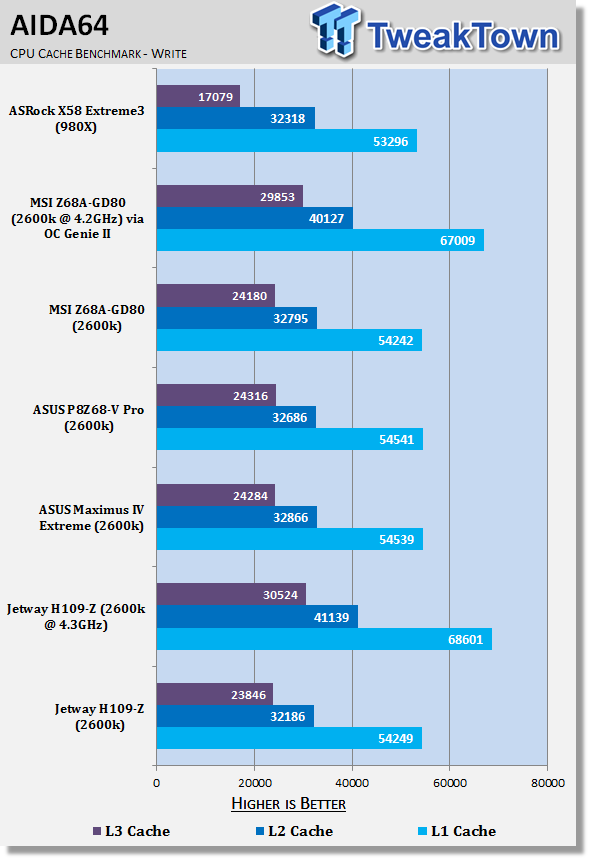
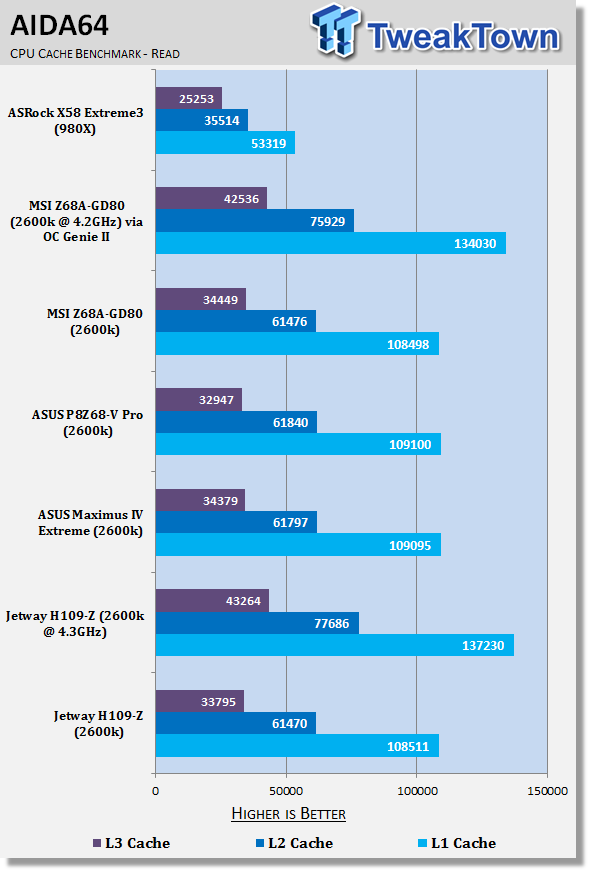
At stock the performance of the system is in line with our other motherboards. Overclocked to 4.3GHz you can also see that performance lines up a little stronger than the MSI board which is running at 4.2GHz via the OC Genie II.
CPU Benchmarks Continued
HyperPi 0.99
Version and / or Patch Used: 0.99
Developer Homepage: www.virgilioborges.com.br
Product Homepage: www.virgilioborges.com.br
HyperPi is a front end for SuperPi that allows for multiple concurrent instances of SuperPi to be run on each core recognized by the system. It is very dependent on CPU to memory to HDD speed. The faster these components, the faster it is able to figure out the number Pi to the selected length.
For our testing we use the 32M run. This means that each of the four physical and four logical cores for the i7 and the four physical cores of the i5 is trying to calculate the number Pi out to 32 million decimal places. Each "run" is a comparative to ensure accuracy and any stability or performance issues in the loop mentioned above will cause errors in calculation.
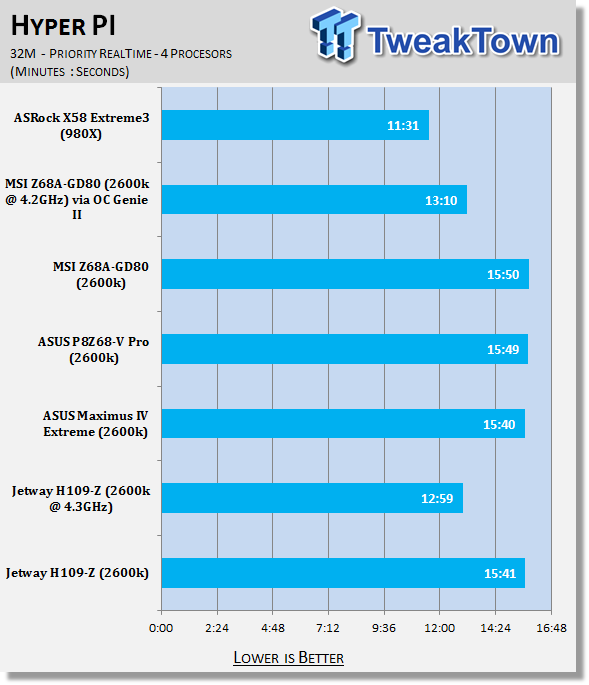
Looking under Hyper PI we can again see that the motherboard performance lines up as we'd want it to, and while we had to run higher voltage on the system to get it stable, it's not like performance is worse than other motherboards; it's just that we had to do a bit of mucking around to get everything running stable. Unfortunately this isn't something you want to be doing with a motherboard.
AutoGK
Version and / or Patch Used: 2.55
Developer Homepage: http://www.autogk.me.uk/
Product Homepage: http://www.autogk.me.uk/
AutoGK stands for Auto Gordian Knot; it is a suite of transcoding tools that are compiled into an easy to install and use utility. It allows you to transcode non-protected DVDs and other media to Xvid or Divx format. For our testing purposes we use a non-DRM restricted movie that is roughly 2 hours in length. This is transcoded to a single Xvid AVI at 100% quality.
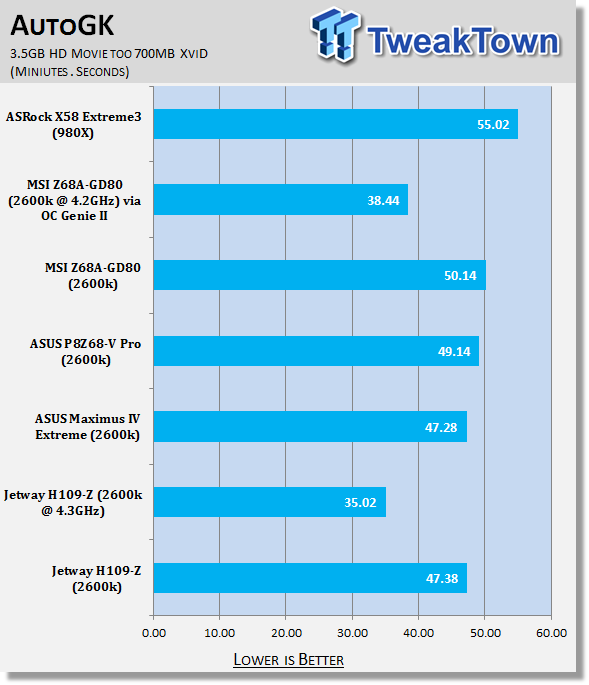
We can again see under AutoGK performance is again on par with our other systems. As we said, it's not that it's slow, it's just that it didn't want to play nice out of the box.
Storage Benchmarks
AIDA64
Version and / or Patch Used: 1.00.1035BETA
Developer Homepage: http://www.aida64.com
Product Homepage: http://www.AIDA64.com
Replacing Everest in our labs is AIDA64. This new testing suite is from the core development team from Lavalys and continues that tradition. The guys have thrown in better support for multithreaded CPUs as well as full 64 bit support. We use this to test memory and HDDs for now, but may find ourselves opening this up to other areas of the motherboard.
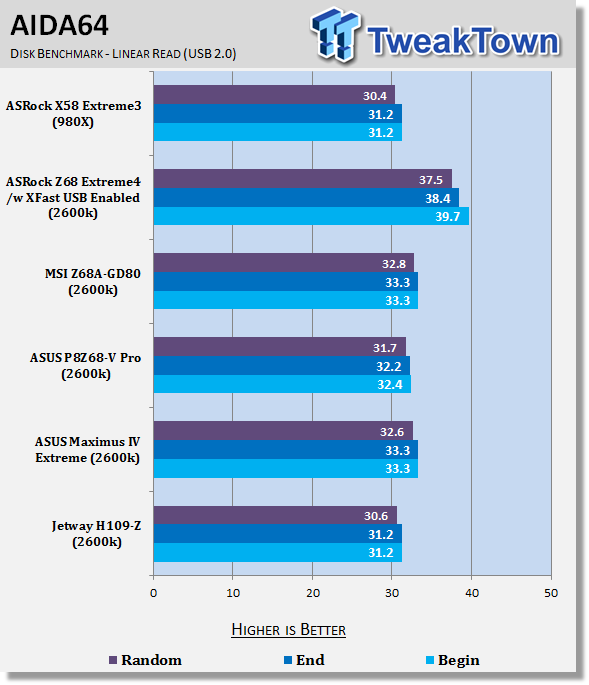

Getting into storage performance, we can see that the USB 2.0 performance is similar to other boards; it does sit a little slower, but nothing too major. As for the SSD performance, you can see that's strong with performance sneaking ahead of other boards in our line-up here.
Memory Benchmarks
Sisoft Sandra
Version and / or Patch Used: 2011
Developer Homepage: http://www.sisoftware.net
Product Homepage: http://www.sisoftware.net
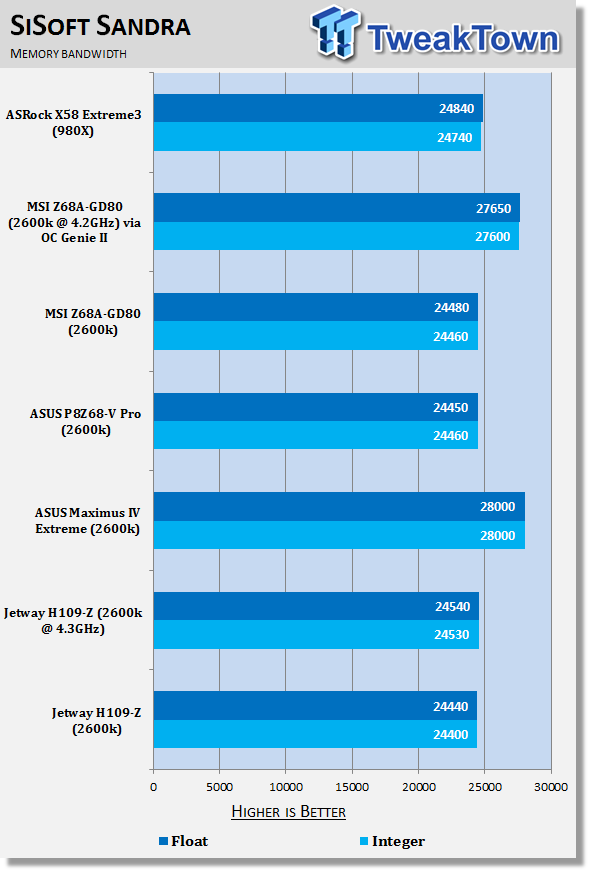
Looking at memory performance under Sandra, you can see there's really no surprises with stock and overclocked performance lining up right next to each other.
AIDA64
Version and / or Patch Used: 1.00.1035BETA
Developer Homepage: http://www.aida64.com
Product Homepage: http://www.AIDA64.com
Replacing Everest in our labs is AIDA64. This new testing suite is from the core development team from Lavalys and continues that tradition. The guys have thrown in better support for multithreaded CPUs as well as full 64 bit support. We use this to test memory and HDDs for now, but may find ourselves opening this up to other areas of the motherboard.
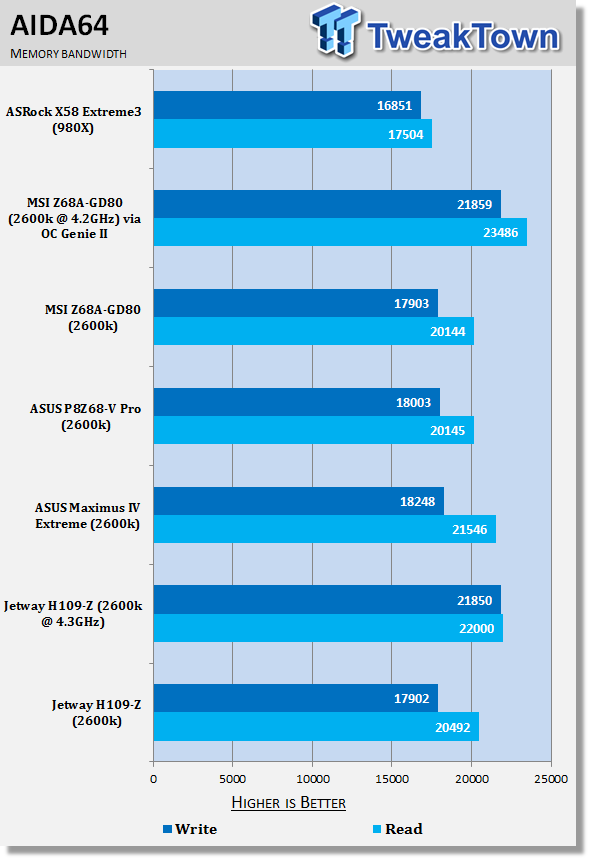
Even though our timings on the RAM are a little more relaxed on our Jetway board, we can see that performance is still quite strong with it performing as you'd expect at stock and stronger when overclocked.
Gaming Benchmarks
3DMark 11
Version and / or Patch Used: 1.0
Developer Homepage: http://www.futuremark.com
Product Homepage: http://www.3dmark.com/3dmark11/
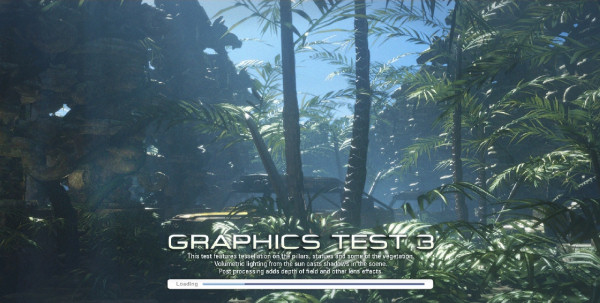
3DMark 11 is the latest version of the world's most popular benchmark. Designed to measure your PC's gaming performance 3DMark 11 makes extensive use of all the new features in DirectX 11 including tessellation, compute shaders and multi-threading. Trusted by gamers worldwide to give accurate and unbiased results, 3DMark 11 is the best way to consistently and reliably test DirectX 11 under game-like loads.
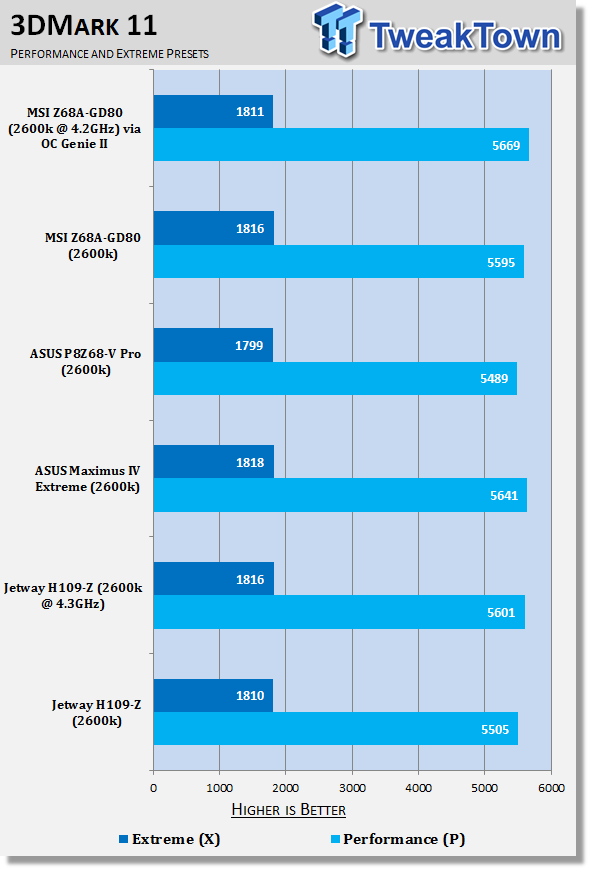
Aliens vs. Predator
Version and / or Patch Used: Standalone Benchmark
Timedemo or Level Used: Built in Benchmark
Developer Homepage: http://www.rebellion.co.uk/
Product Homepage: http://www.sega.com/games/aliens-vs-predator/
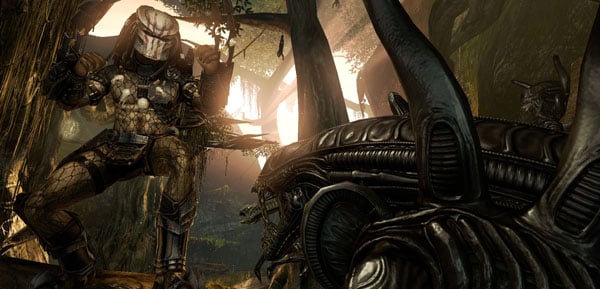
Aliens vs. Predator is a science fiction first-person shooter video game, developed by Rebellion Developments, the team behind the 1999 original PC game, and published by Sega for Microsoft Windows, the PlayStation 3 and the Xbox 360. The game is based on the Alien vs. Predator franchise, a combination of the characters and creatures of the Alien franchise and the Predator franchise. There are three campaigns in the game, one for each race/faction (the Predators, the Aliens and the Colonial Marines), that, while separate in terms of individual plot and gameplay, form one overarching storyline.
Following the storyline of the campaign modes comes the multiplayer aspect of the game. In this Multiplayer section of the game, players face off in various different gametypes in various different ways.
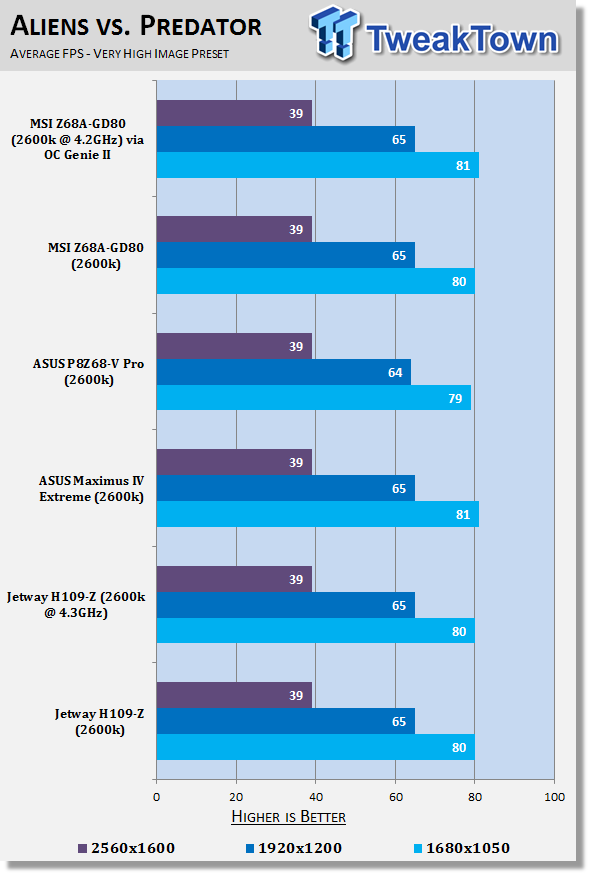
Looking at 3DMark 11 and Aliens vs. Predator, you can see no real surprises with our Jetway board giving us the exact kind of performance we'd expect.
Temperature and Power
Core Temperature
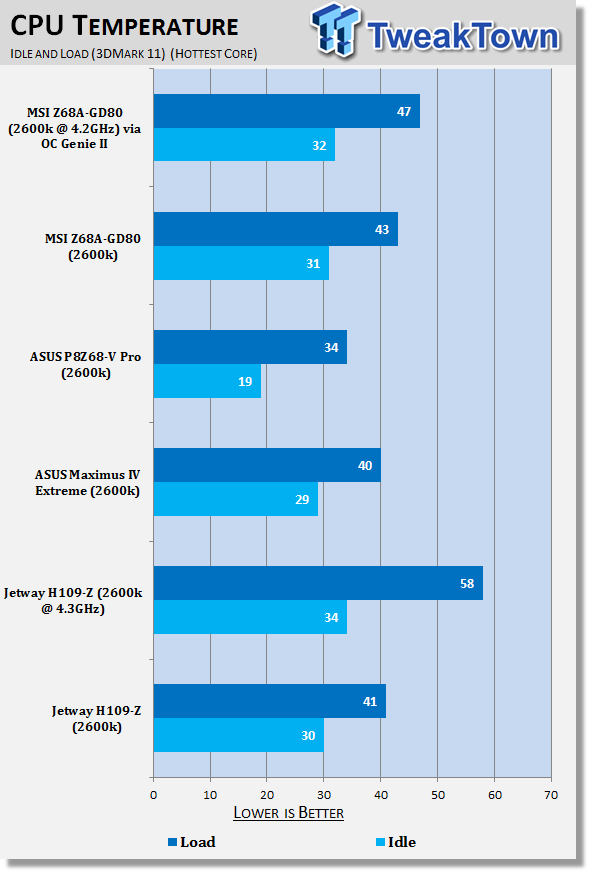
At stock you can see our core temp isn't too bad even though we're running a bit more voltage through the system. Overclocked, though, you can of course see it jump up as we climb to that 1.5v level that we normally reserve for 5GHz+ overclocks.
Power Draw Tests
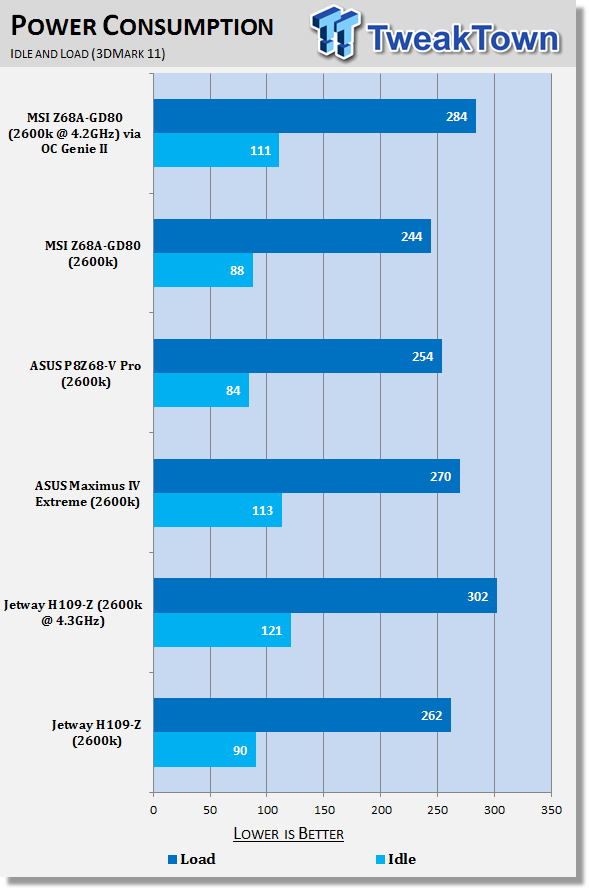
Looking at power draw, we can see that it lines up with our other system for the post part. It sits a little higher than some boards, but a little lower then others.
Final Thoughts
As far as looks go, the HI09-Z motherboard from Jetway is pretty good looking and carries with it some nice features in the form of the built in power button, LED debug reader and mini PCI-E port. The problem seems to be once we get up and running. Our 2600k which has been flawless on every other motherboard we tried, just wasn't playing nice on this one.
When we go through and look at numbers like heat as well, we know it's not related to that, as in that department we again see the board doing very well. Unfortunately it doesn't change the fact that at stock we couldn't get our RAM to run as strong as it normally would on other boards, nor could we get our CPU running past a 43x multiplier.
We emailed Jetway and didn't hear back from them and we looked at their website and confirmed we're using the most up to date BIOS. There doesn't seem to be anything wrong with the board itself because once we bumped those voltages up a little, it ran perfect at stock. The issue is no one should have to go into the BIOS to get their machine running stable at stock.
On the topic of the BIOS, it's not nice. We can get past the lack of the graphical interface, we've seen GIGABYTE choose not to use it and that's not a problem. The biggest issue with the BIOS is not only the lack of options, but with the options we do have, the range is an issue.
I really feel that this board is only a BIOS fix away from performing well. Unfortunately we don't have that BIOS. The biggest issue we're going to have is when someone from Jetway does get back to us, they're going to send us through a list of things that will try to determine if it's something else other than the motherboard. If the amount of motherboards we've reviewed lately tell the story, though, it's that the components we're using are running like a dream.
There's some potential here as the board looks great and once up and running, performance is exactly as it should be. There's no doubt some issues at the moment and with no price and the board not being listed on Newegg yet, we feel it's almost pointless giving it any kind of score at this time.
For the time being, though, it's not one we'd recommend and considering it's hard to find at the moment anyway, the chances are that's not going to be an issue for you. If anything changes soon with the board, we'll make an effort to update this review, but until then we have to move on to the next product.
